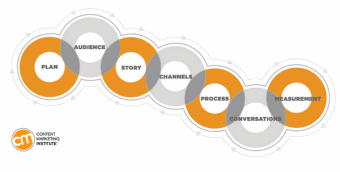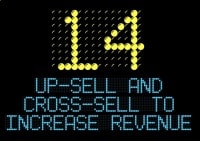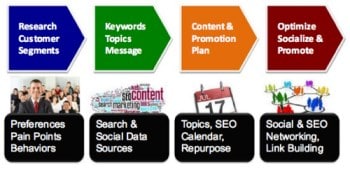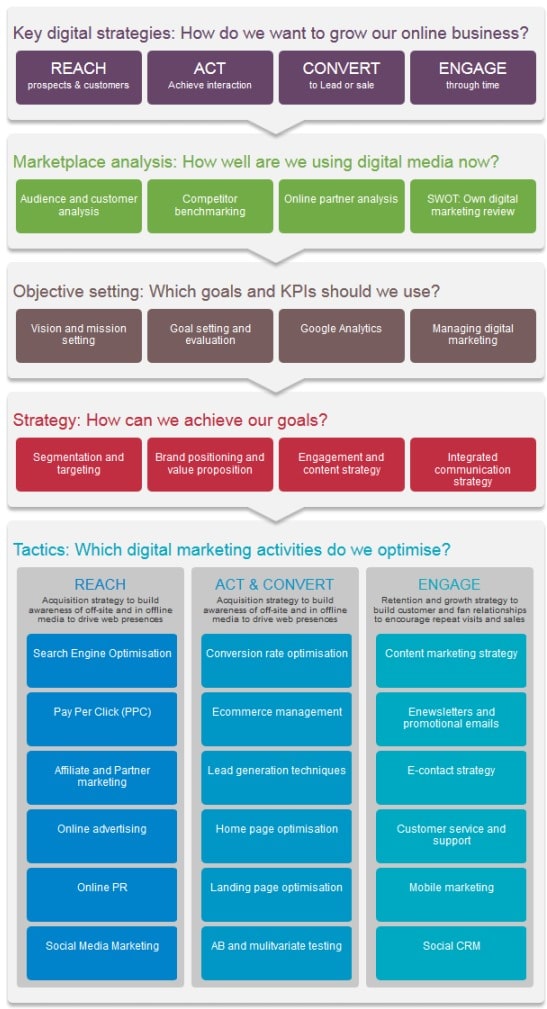Content marketing strategy and program frameworks – overview and advice.
There is no “silver bullet” or one-size-fits-all content marketing strategy, plan or framework that applies to every organization. However, it’s certainly true that in each case, common elements exist for successful content marketing programs.
In an eBook, “The CMI Content Marketing Framework” (PDF opens), Joe Pulizzi and Robert Rose provide a reference framework that can be used for successful content marketing programs, based on 7 building blocks in the content marketing strategy and content marketing management process. Indeed, having a content marketing strategy is one thing, managing it another.
A look at several frameworks you can use as a guide to start working on a more integrated content marketing approach.

In case you haven’t seen the content marketing framework Pulizzi and Rose proposed yet, the seven ‘building blocks’ are:
- Plan.
- Audience.
- Story.
- Channels.
- Process.
- Conversations.
- Measurement.
I won’t cover them all in detail as they pretty much speak for themselves and you can find them in the eBook (see below). Furthermore, each of the seven building blocks deserves more attention than fits in one, let alone, several posts.
Start simple but look at all building blocks of content marketing programs in detail: example
In practice, content marketing requires quite some work and successful content marketing programs are by definition integrated in the overall marketing and even sales approach. The more complex your go-to-market model is, for instance, the more complex the content marketing strategy can – and maybe should – be.
The different building blocks can also be complex, certainly in international operations. An example: take the planning stage and, more specific, the definition of your goals and how to achieve them. Your business goals can be increasing sales, improving margins and lowering costs. Those are nice overall business goals. But when you start looking at them more questions surface because there are many ways to achieve them.
Potential goals:
- Fill the pipeline and acquire new customers.
- Up-sell and cross-sell.
- Involve your people more in the marketing and sales process.
- Involve existing customers in the sales and marketing process.
- Better close the gap between marketing & sales.
- Optimize consistency across all touchpoints to engage opportunities better.
- Lose less opportunities in the middle stages of the buyer’s journey.
- Achieve economies of scale.
- Optimize collaboration internally.
- Optimize communication/collaboration externally.
- Cost of labor: do more with less.
- Lower costs of marketing by including community-generated resources.
- Collaborate with other teams/countries to optimally allocate budgets and avoid unnecessary expenses.
- Reduce churn / increase retention.
- Increase loyalty.
- Turn existing customers into evangelists.

You see where this is going. Now just think about how complex it becomes if you start looking at the intermediate goals. For instance, let’s say you want to fill the pipeline, generate leads and acquire new customers.
How do you get there? Again, there are dozens of possibilities. If you start mapping those with channels than can be used for them, depending on your target audiences, you’re gone for quite a ride.
The staged approach of content marketing programs
However, you need to start somewhere. In daily practice I notice that businesses have a staged approach and that’s normal as one of the things you always see when implementing content marketing programs or any other integrated marketing program (analytics, Marketing ROI, etc.), is that the organization goes through stages of optimization and self-reflection.
Other reasons why content marketing programs get planned and rolled out in a staged way include:
- The integration of content marketing in overall digital marketing strategy.
- The need to acquire internal skills to make content marketing programs succeed. These range from teaching the simple use of social channels to acquiring more strategic skills.
- Setting up processes and teams of internal and external partners as content marketing management is crucial, whether it concerns continuous optimization or measurement.
- Getting a culture and mindset across the whole business whereby the role of content becomes clear and most of all the importance of an integrated and customer-centric view gets gradually embraced and even rewarded.
- The need to combine content marketing programs with social media and even social business programs as the buying journey is really connected. This isn’t even only a matter of social media but also of getting in the trusted circles of advice during the consideration stages offline.
There are many more considerations and reasons why content marketing programs are staged and go beyond frameworks. Just think about the integration with other marketing tactics and touchpoint analysis. Furthermore, most of the examples I share here concern B2B marketing but what if you’re a publisher or a large consumer brand? And what if you’re a multi-lingual multinational that has to work in a streamlined and consistent way?
Useful content marketing frameworks
Pulizzi and Rose recognize this and also emphasize that the content marketing framework they propose is not a template or linear experience. It’s certainly a good framework, however, to keep in mind and use when you want to make sure your content marketing program and content marketing management processes don’t overlook crucial elements.

In this regard, also take a look at some other content marketing frameworks such as:
- The content marketing framework by Dave Chaffey, as mentioned in his Content Marketing Strategy guide, co-authored with Dan Bosomworth, and partially based on their RACE Planning Framework (see image below).
- The “5 A” framework for content marketing success by Brian Clark, which has another approach and angle and is elaborated in some of Brian’s free eBooks.
- The 4 step content marketing framework for start-ups by Lee Odden and similar frameworks by Lee in his book Optimize.
- The social business approach as Michael Brito explained in a post, illustrated with another slideshare presentation (by the way, have you noticed how other social business/media practitioners and thinkers increasingly look at content marketing?).
- The simple – but, again a very useful and practical – content marketing framework by Warren Fauvel (click for PDF).
All these – and several other – content marketing frameworks, each with another angle, help you plan, define a content marketing strategy, take into account the major steps in content marketing programs, define metrics, and more.


